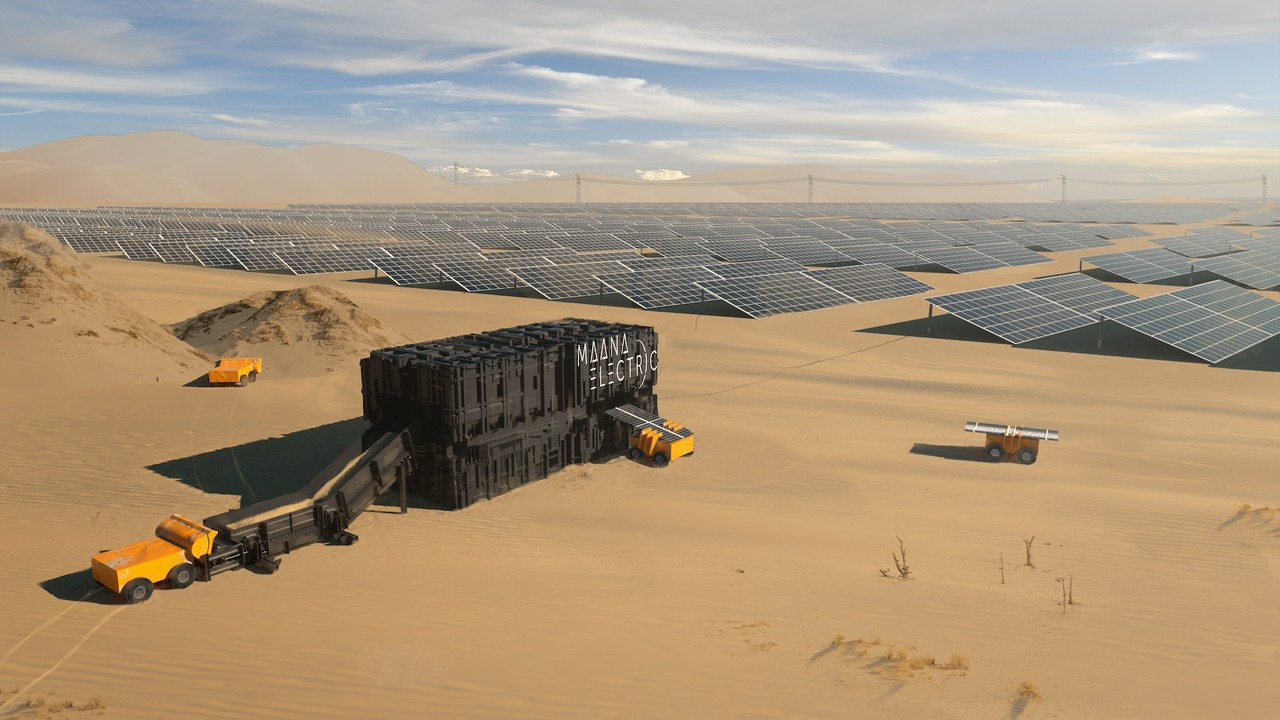The long-term aim of such a device, explains cofounder Fabrice Testa, is to facilitate the production of energy on the moon using local resources. “If one day we want to build a moon base,” he reasons, “then we’ll need a lot of energy. And one way to provide this energy is solar panels.”
The idea is that it would be far easier to produce these panels on the moon than to transport them from Earth.
Since its creation in 2018, Maana Electric has won the support of the Luxembourg Space Agency as well as several R&D contracts, enough to allow it to incorporate and to expand its personnel to 40 people.
Founded on the ground
Because installing a moon base is still several years away, Testa and the startup’s other cofounder Joost van Oorschot asked themselves: “Why not use the same technology to disrupt the way solar panels are made on Earth?”
That is how the TerraBox came into being. It’s a forerunner of the moon version of the product—which, appropriately, will be called the LunarBox—and is meant for earthly use. As a transportable factory, it doesn’t need a large supply chain to transport materials. And the process also, according to the Maana Electric website, doesn’t produce any greenhouse gas emissions, whereas traditional methods do.
And it’s the TerraBox whose prototype is nearing completion at the firm’s 2,500m2 space in Foetz. “It should hopefully be operational by this summer,” says Testa.
Land of sand
After in-house testing, the TerraBox will likely be deployed first somewhere in the United Arab Emirates. Testa explains several reasons for the firm’s interest in the UAE: beyond the mere reality of needing sandy conditions to use the product, the UAE “invests quite a lot of money into sustainability, sustainable solutions and renewable energy. But,” he adds, “Dubai is also a very active force in the space industry.”
This combination of terrestrial and extraterrestrial focal points makes the UAE “a perfect fit”, says Testa, which is why Maana Electric has recently . While the company is hoping to grow primarily in Luxembourg, “at some point we also want to have a small team in Dubai,” says the cofounder.
He is currently in the country attending the Expo 2020 Sustainability Week. “It’s a way to find some partners and potential customers,” he says of his reasons for attending the event. “It’s a business development mission.”
Soon on the moon
“We would like to fly in 2024 or 2025, depending on flight opportunities.” To the moon, he means. Once there, the hope is to perform a test, “an experiment to produce 100 grams of oxygen and 100 grams of silicon on the moon.”
“If we succeed, we’ll probably be the first company in the world to produce metals on the moon.”
The technology they use to extract silicon also produces oxygen, Testa explains.
In Dubai last October Maana Electric signed a memorandum of understanding with ispace, a private lunar robotic exploration company, whose rover might be able to bring the experiment to the moon.
Beyond this experiment, says Testa, “maybe there will have to be an intermediary step before the LunarBox.” He hopes that the LunarBox could be up and running by the end of the decade, however.
“It depends also on the different programmes that go back to the moon. It’s also about financing. This isn’t something we can finance ourselves—at some point there must be an involvement of space agencies. So we are in constant discussion with the key players in that industry, and we’ll see how things evolve,” he says.
